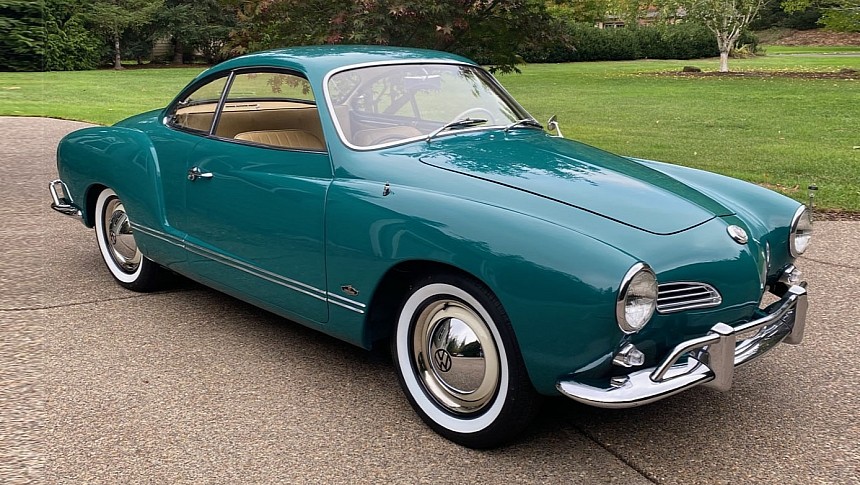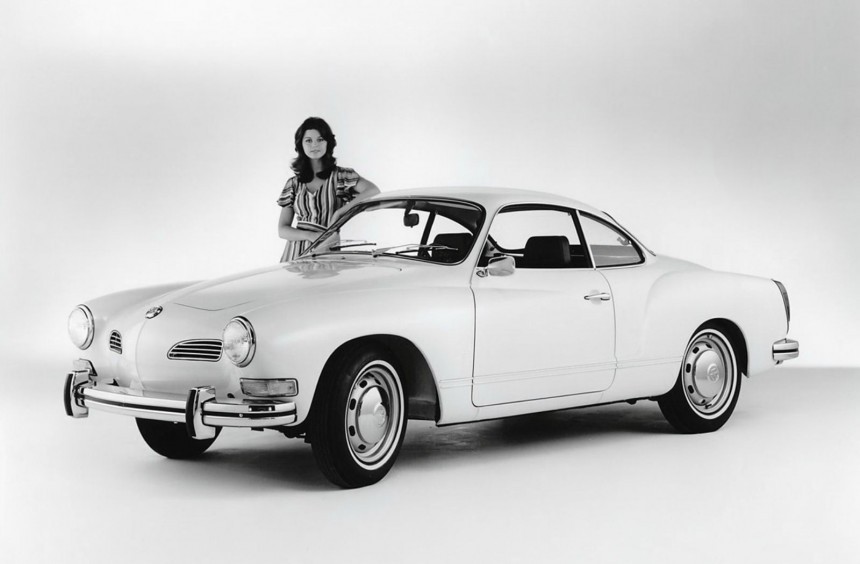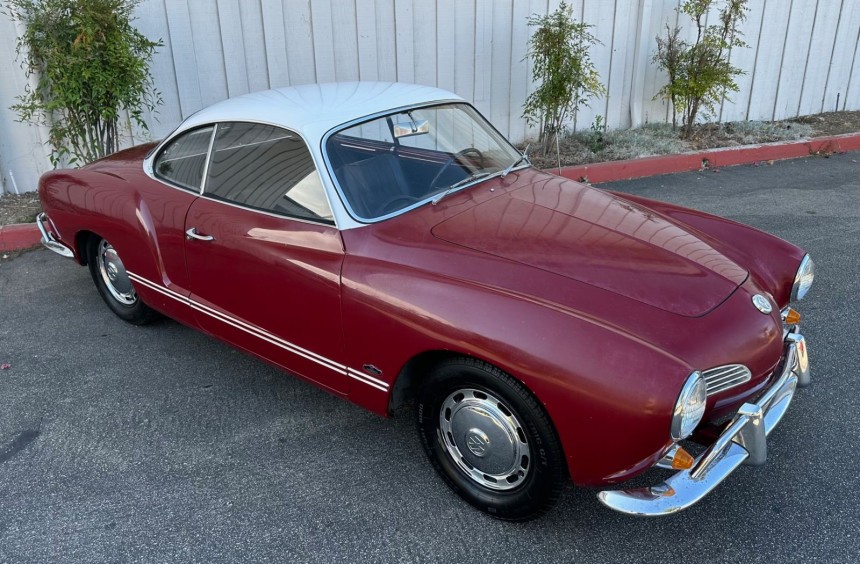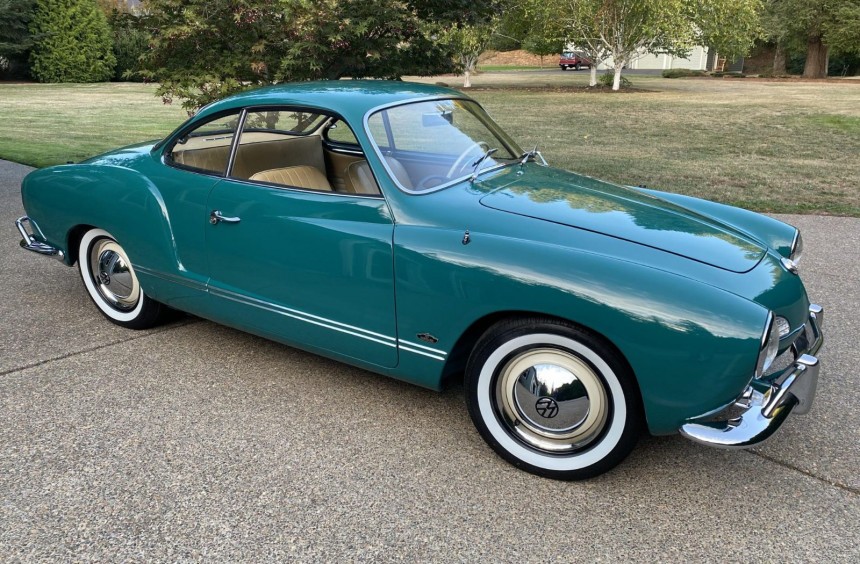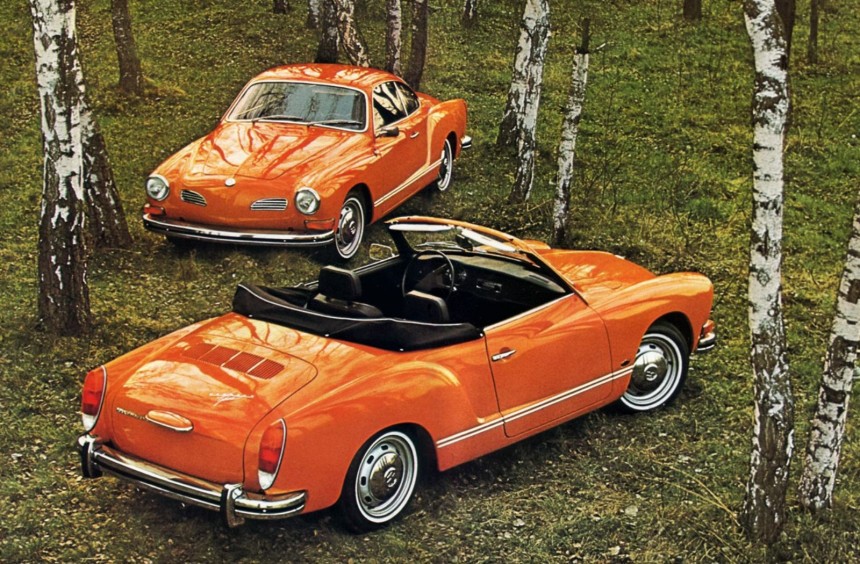A Type 1 "Beetle," dressed in a designer suit, the Type 14 Karmann Ghia was Volkswagen's second mass-produced passenger car and its first sporty model.
When I was a teenager, one of the first trips I took outside my home country was to the beautiful island of Malta.
Though it's a beautiful place with fantastic scenery, the first thing that comes to mind when I think of Malta today is when I see a Type 14 Karmann Ghia parked in front of a coffee shop.
Even at that age, I could identify popular classic cars, but I had no idea what I was looking at. Before I could notice the VW badges, an older man came and said hello, jokingly asking me to pick up my jaw from the pavement.
It turned out that the friendly man owned the elegant little coupe, and after he invited me for a cup of coffee, we spent the better part of an hour talking about the car.
That, my friends, was when I was introduced to the Type 14 Karmann Ghia, and I've been in love with the car ever since.
I often tell this story and talk about the Karmann Ghia whenever I converse with fellow car enthusiasts. I'm always surprised how many people have never heard about this beautiful classic Volkswagen.
The story of this fascinating car starts in 1950 when German coachbuilders Karmann -who at the time was manufacturing convertible Beetles for VW - started developing a sporter body for the cheap and reliable underpinnings of the popular Type 1.
The story goes company boss Wilhelm Karmann presented initial sketches and a production plan to VW decision-makers, but they were turned down since the Beetle was selling well in its original form.
Nevertheless, the team behind the project didn't give up and went back to the drawing board, focussing on a new proposal that would persuade VW management to reconsider.
Karmann knew that his project needed to be truly special in order to persuade VW, so he traveled to Italy for a meeting with Luigi Segre, head of the famed Carrozzeria Ghia.
Both Karmann and Ghia were looking to expand their respective businesses, and the two bosses agreed that a Beetle-based model would be perfect.
After striking a deal with his German counterpart, Segre sourced a stock Beetle from a dealership in France and then personally oversaw the development of the new car.
In late 1953, the Karmann met Segre again, but a fully functional prototype was waiting for him this time.
Karmann was thrilled by the stylish little coupe that bore no resemblance to the Beetle. He and Segre agreed the two companies could produce it without additional help, but Karmann decided to pitch the coupe to VW, eyeing the manufacturer's worldwide dealership network.
This time, VW was impressed with the car and gave Karmann the green light to start a production run.
The VW Karmann Ghia was presented to the press on July 14, 1955, and two months later, it was unveiled to the public at the Frankfurt Motor Show.
Although initially powered by the Beetle's modest 30-hp flat-four, the car was met with an overwhelmingly positive reaction by the press and the public thanks to its beautifully sculptured body.
Designed by an all-star team of Ghia stylists, including Luigi Segre, Mario Boano, Sergio Coggiola, and Giovanni Savonuzzi, the Karmann Ghia was inspired by Virgil Exner's Chrysler D'Elegance concept.
Years later, Exner's son stated that the gorgeous VW "was a direct, intentional swipe off the Chrysler D'Elegance." Still, several people involved in the project argued that the famed American designer never complained about the Karmann Ghia.
In Exener's biography, writer Peter Grist states that the designer - a close friend of Luigi Segre - "was pleased with the outcome and glad that one of his designs had made it into large-scale production."
Moreover, Chris Voss, a former Exener employee, stated that the stylist saw the Karmann Ghia as the ultimate form of flattery and was thrilled to receive the first example that arrived in a Michigan dealership as a gift from his close friend.
The Type 14's exquisite body comprised a series of beautifully sculptured panels assembled by hand on purpose-built jigs. Most had to be welded together, filled with lead and smoothed to produce a seamless structure.
The chassis also received some minor modifications to accommodate the new body, but essential assemblies like the suspension, brakes, and steering box were carried over from the Beetle.
As I already mentioned, the Karmann Ghia initially featured a 30-hp OHV air-cooled flat-four shared with the Beetle. The engine was enlarged and improved over the years, culminating in a 60-hp 1,584-cc unit.
With a reliable, easy-to-maintain, and fuel-efficient powertrain covered by a coachbuit body, the stylish 2+2 became very popular despite its lack of power and heftier price tag (compared to its sibling).
Moreover, customers appreciated its maneuverability, a significant improvement over the Beetle thanks to the lower center of gravity.
The Type 14 Karmann Ghia was produced from 1955 to 1974 and sold in many important markets, including the US. It was available as a two-door coupe or a convertible, introduced in 1957.
From 1961, the Karmann Ghia series also included a second model (Type 34) based on the VW 1500 (Type 3) with a different Ghia body. Furthermore, another Type 34-based, Giorgetto Giugiaro-designed version dubbed TC was produced in Brazil.
Although it was not as wildly popular as the Beetle, the Type 14 Karmann Ghia was produced in nearly 300,000 units during its 19-year run.
Today, the model has been forgotten by many classic car enthusiasts, and therefore, a surviving example in great shape has an average value of around $25,000, according to classic.com.
Even if it wasn't a thoroughbred sports car, the Beetle's stylish sibling remains Volkswagen's first sporty model and one of its most interesting classic cars.
You can learn more about this fantastic model in the YouTube video below by Shooting Cars.
Though it's a beautiful place with fantastic scenery, the first thing that comes to mind when I think of Malta today is when I see a Type 14 Karmann Ghia parked in front of a coffee shop.
Even at that age, I could identify popular classic cars, but I had no idea what I was looking at. Before I could notice the VW badges, an older man came and said hello, jokingly asking me to pick up my jaw from the pavement.
It turned out that the friendly man owned the elegant little coupe, and after he invited me for a cup of coffee, we spent the better part of an hour talking about the car.
That, my friends, was when I was introduced to the Type 14 Karmann Ghia, and I've been in love with the car ever since.
I often tell this story and talk about the Karmann Ghia whenever I converse with fellow car enthusiasts. I'm always surprised how many people have never heard about this beautiful classic Volkswagen.
A sporty and elegant Beetle alternative initially turned down by VW
The story goes company boss Wilhelm Karmann presented initial sketches and a production plan to VW decision-makers, but they were turned down since the Beetle was selling well in its original form.
Nevertheless, the team behind the project didn't give up and went back to the drawing board, focussing on a new proposal that would persuade VW management to reconsider.
Infusing a healthy dose of Italian flair into the project
Both Karmann and Ghia were looking to expand their respective businesses, and the two bosses agreed that a Beetle-based model would be perfect.
After striking a deal with his German counterpart, Segre sourced a stock Beetle from a dealership in France and then personally oversaw the development of the new car.
In late 1953, the Karmann met Segre again, but a fully functional prototype was waiting for him this time.
Karmann was thrilled by the stylish little coupe that bore no resemblance to the Beetle. He and Segre agreed the two companies could produce it without additional help, but Karmann decided to pitch the coupe to VW, eyeing the manufacturer's worldwide dealership network.
This time, VW was impressed with the car and gave Karmann the green light to start a production run.
Based on a Chrysler concept
Although initially powered by the Beetle's modest 30-hp flat-four, the car was met with an overwhelmingly positive reaction by the press and the public thanks to its beautifully sculptured body.
Designed by an all-star team of Ghia stylists, including Luigi Segre, Mario Boano, Sergio Coggiola, and Giovanni Savonuzzi, the Karmann Ghia was inspired by Virgil Exner's Chrysler D'Elegance concept.
Years later, Exner's son stated that the gorgeous VW "was a direct, intentional swipe off the Chrysler D'Elegance." Still, several people involved in the project argued that the famed American designer never complained about the Karmann Ghia.
In Exener's biography, writer Peter Grist states that the designer - a close friend of Luigi Segre - "was pleased with the outcome and glad that one of his designs had made it into large-scale production."
Moreover, Chris Voss, a former Exener employee, stated that the stylist saw the Karmann Ghia as the ultimate form of flattery and was thrilled to receive the first example that arrived in a Michigan dealership as a gift from his close friend.
Largely handbuilt and produced for nearly two decades
The chassis also received some minor modifications to accommodate the new body, but essential assemblies like the suspension, brakes, and steering box were carried over from the Beetle.
As I already mentioned, the Karmann Ghia initially featured a 30-hp OHV air-cooled flat-four shared with the Beetle. The engine was enlarged and improved over the years, culminating in a 60-hp 1,584-cc unit.
With a reliable, easy-to-maintain, and fuel-efficient powertrain covered by a coachbuit body, the stylish 2+2 became very popular despite its lack of power and heftier price tag (compared to its sibling).
Moreover, customers appreciated its maneuverability, a significant improvement over the Beetle thanks to the lower center of gravity.
The Type 14 Karmann Ghia was produced from 1955 to 1974 and sold in many important markets, including the US. It was available as a two-door coupe or a convertible, introduced in 1957.
From 1961, the Karmann Ghia series also included a second model (Type 34) based on the VW 1500 (Type 3) with a different Ghia body. Furthermore, another Type 34-based, Giorgetto Giugiaro-designed version dubbed TC was produced in Brazil.
The Type 14 Karmann Ghia today
Today, the model has been forgotten by many classic car enthusiasts, and therefore, a surviving example in great shape has an average value of around $25,000, according to classic.com.
Even if it wasn't a thoroughbred sports car, the Beetle's stylish sibling remains Volkswagen's first sporty model and one of its most interesting classic cars.
You can learn more about this fantastic model in the YouTube video below by Shooting Cars.
